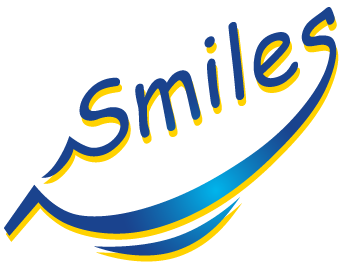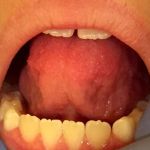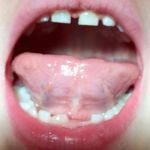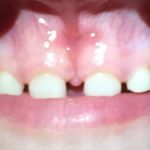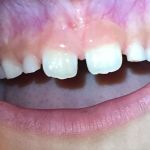Smiles Pediatric Dentistry is a vision before being a dental office. We simply strive to see each child we treat smile. By spreading smiles that are healthy, individually beautiful yet a universal language that everyone understands, we aim to help children view dentistry as a comfortable, highly important part of their health.
We believe in helping children avoid the various discomforts caused by oral disease. Studies have found dental disease to be the most common chronic disease of childhood and one of the leading causes of school absences. (reference 1) Research shows that approximately 60% of children are diagnosed with caries or dental decay by age five. (reference 2) Prevention of these possible problems requires two important aspects: 1 – Establishing a ‘Dental Home’, and 2 – An early dental evaluation.
1 – Establishing a ‘Dental Home’ for your child.
The American Academy of Pediatrics (AAP) issued a policy in the nineties defining the ‘medical home’. This concept means finding a healthcare facility that delivers comprehensive, continuously accessible, family centered, coordinated, compassionate care to your family. (reference 3) Healthcare provided to patients in a ‘home’ environment is not only more effective but less costly in comparison to emergency facilities. The ‘dental home’ was adopted by the American Academy of Pediatric Dentistry (AAPD) in 2001. (reference 4) A dental home not only provides comprehensive oral care but also creates an individualized preventive plan based upon careful assessment of your child’s special needs.
2 – An early dental evaluation.
The AAPD encourages parents to help their child establish a dental home by the time the first tooth erupts and no later than 12 months of age. (reference 5) Early evaluation is the key to avoiding dental disease. By educating families about the disease process and how to avoid or stop it, we are moving on to a new age in dentistry. We are no longer treating the manifestation of dental disease (caries or dental decay), We are now taking on a ‘medical approach’ to dentistry by controlling the cause of the disease (the bacteria). (reference 6)
To help you understand the cycle of dental disease and how it starts, please visit our Frequently Asked Questions.
Smiles Pediatric Dentistry is a dental home that provides the highest quality of pediatric dentistry utilizing the most advanced technologies. We are a paperless and digital office.
As a ‘dental home’, we believe that evaluations by age one are an important factor in achieving oral health for life. Because the first visit is very important, we take special care in how each child is introduced to our office and encourage ‘healthy dental visits’. Children who are first seen for a friendly examination and cleaning are able to enjoy the dental experience and build a bond of trust with us. A customized dental plan that includes prevention, growth development, and possible treatment is created to fit your child’s specific dental needs. Topics that include oral hygiene, sports dentistry and early orthodontics are discussed with each family.
Our office invites parents to be part of the dental experience. We explain our examination findings and demonstrate oral hygiene procedures to ensure you are able to help your child complete them comfortably at home. We also involve parents in the dental treatment to better understand how we care for each child.
Here are some of the highlights of our approach:
- Evidence Based Dentistry: Use of the highest quality dental instruments and materials all of which are ranked “superior” in reputable studies.
- Digital Imaging and Photography: Use of a hand-held imaging device called the “Nomad” along with a digital sensor reduces radiation exposure to documented, negligible amounts. Intra-oral cameras transfer images of your child’s mouth to our computer screens allowing us to share any areas of concern with you privately without alarming your child. *** LEARN MORE ABOUT THE NOMAD ***
- 3D Scanning/Impressions: Using a unique three diminutional scanner called the ITero, we are able to avoid impression materials, have a perfect replica of your child’s mouth that can be stored for records or securely emailed to a lab for the fabrication of orthodontic appliances. ***LEARN MORE ABOUT THE iTero***
- Laser Diagnostic Technology: Part of our exam can be completed using the “Diagnodent”. This instrument utilizes a laser to help diagnose lesions that are difficult to detect with imaging only. *** LEARN MORE ABOUT THE DIAGNODENT ***
- Laser Dental Surgery: Gentle dental surgical procedures completed easily and comfortably for infants, children and teens using the NV microlaser. *** LEARN MORE ABOUT THE NV MICRO LASER *** For more information, please visit our laser tab on this page.
- Biocompatible Dentistry: We select materials that are most in harmony with the human body avoiding exposure to heavy metals and BPA-releasing substances. We use only distilled water in our units and planet safe, OSHA compliant disinfectants.
- Minimally Invasive Dentistry: Discussing caries prevention, “caries control” options, consideration of Silver Diamine Fluoride (SDF is a liquid medication that can be used to arrest, or stop, tooth decay), and tailoring a prevention plan to fit each child’s dental needs are important steps before considering the necessity of dental restorations. If restorations are required, we advocate a minimal, tooth preserving approach.
- Single Tooth Anesthesia System (STA): When a local anesthetic is needed, we use a computerized device called the STA rather than a “shot”. This system has disposable, child-friendly, hand-pieces that look like a pen rather than a traditional syringe.*** LEARN MORE ABOUT STA System ***
- Cosmetic Pediatric Dentistry: Choosing tooth-colored materials when dental restorations are necessary and advanced cosmetic techniques including micro-abrasion and whitening.
- Orthodontics: A comprehensive, team approach to a beautiful smile is offered by teaming up our pediatric dental knowledge and services with our orthodontic specialists. All under one roof. For more information, please visit our orthodontic tab on this page.
- Sedation Options: To aid us in delivering superior dental care while keeping your child safe and comfortable, we offer several sedation options which are customized to fit your child’s specific needs:
- Nitrous Oxide/Oxygen (Inhalation Sedation)
- Moderate Sedation (Conscious Sedation)
- Deep Sedation or General Anesthesia
For more information, please visit our sedation tab on this page.
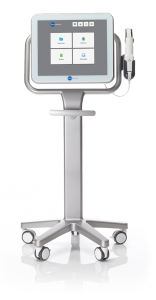 Because the Smiles team has the pleasure of meeting our children at the “age one” pediatric dental visit, we are always on the lookout for any orthodontic challenges that can be noted early on and are checking in with our families on orthodontic concerns every visit. Knowing each of our little patients well also allows us to help parents assess their little one’s “emotional readiness” for orthodontic care.
Because the Smiles team has the pleasure of meeting our children at the “age one” pediatric dental visit, we are always on the lookout for any orthodontic challenges that can be noted early on and are checking in with our families on orthodontic concerns every visit. Knowing each of our little patients well also allows us to help parents assess their little one’s “emotional readiness” for orthodontic care.
One of the highlights of Smiles is the team approach we offer to each of our families. Having in-house pediatric dental and orthodontic specialists allows for better decision making on treatment plans that involve restorations and tooth movement, better understanding of the dental history and disease risk for each child, better appliance planning, better oral hygiene and prevention care and less time spent coordinating and visiting different locations. Another benefit in having both the pediatric dentistry and orthodontic specialties under one roof is seamless integration of your child’s dental images and records without the need to duplicate or send these anywhere. They are simply in your child’s complete, digital, dental record.
The ITero Element intraoral scanner: In addition to our digital imaging and photography, three-dimensional scanning is used to document your child’s initial dentition and progress through the orthodontic care. Impressions for orthodontic appliances are no longer needed. The 3D scan of your child’s mouth can be securely emailed to our lab for fabrication of any appliances that are needed. For more information, please visit: ITero.com
The current approach to orthodontics is a two-phase approach. Each phase lasts an average of 18 months and focuses on correcting certain challenges that are age-appropriate depending on the child’s growth and dental development. Phase one is typically initiated between the ages of 7 and 9. Phase two is a later phase that usually occurs when the child is in full permanent dentition around the age of 12 and older. The goals for phase one orthodontic treatment usually include aligning the newly erupted upper and lower incisors, achieving good jaw coordination and a healthy bite and correcting any arch width concerns or crowding. Another main goal of phase one treatment is to ensure a good eruption path for the developing permanent canines. The goals of phase two orthodontic care include alignment of all the permanent dentition in each arch and coordination of the bite of both arches in all dimensions along with stabilizing the achieved results.
The American Association of Orthodontists (AAO) recommends orthodontic evaluations by the age of seven. This is an ideal age for phase one correction, because the first permanent molars have typically come in, and crossbites, crowding, and other common problems can be addressed before they worsen. Early treatment may prevent or intercept more serious problems from developing and may allow for treatment at a later age to be shorter and less complicated or even, at times, unnecessary. In some cases, we will be able to achieve results that may not be possible once the face and jaws have finished growing. Here are some of the benefits of phase one:
- May allow the opportunity to guide jaw growth.
- Can Lower the risk of trauma to protruded front teeth.
- Can correct harmful oral habits.
- Improves appearance.
- Guides permanent teeth into a more favorable position.
- Improves the width of upper jaw and dental arches.
- Improves airway.
- Reduces the need to extract permanent teeth.
- Reduces or eliminates the need for jaw surgery.
- Guides permanent teeth into more favorable positions.
- Preserves/creates additional space for permanent teeth.
- Improves self-esteem.
Appliance options:
Removable appliances: Removable retainers, expanders and space maintainers can be custom designed.
Fixed appliances include:
- Small profile traditional metal brackets with options to pick elastic colors.
- Clear brackets which are tooth colored and ceramic.
- Self-ligating brackets, or tie-free braces.
 Invisalign: Fully customized, clear aligner trays which can be removed when eating and brushing. Similarly to metal braces, clear aligners use gradual force to control the movement of teeth. No wires or brackets are needed!
Invisalign: Fully customized, clear aligner trays which can be removed when eating and brushing. Similarly to metal braces, clear aligners use gradual force to control the movement of teeth. No wires or brackets are needed!
Clear aligners use a strong clear plastic material that is customized to make changes in tooth position with the use of a series of trays that are switched out every one or two weeks.
For more information, visit: invisalign.com
Preventive dental procedures are generally well-tolerated by most of our children. The best part of these procedures is that parents can reinforce them at home by helping their little ones brush and floss and reminding them of how well they did during their dental visit. This positive reinforcement is such an important factor in shaping a child’s view about dentistry. It allows them to look forward to their next visit. Techniques such as “Tell-Show-Do” (explaining the steps of the visit one by one to your child) and “positive modeling” (allowing your child to watch another child’s positive visit) help greatly and are used constantly in our office. This is why we are passionate about prevention and continuously encourage early dental visits.
Operative dental procedures offer more stimulants than routine dental visits. Completing technique-sensitive and high quality restorations requires the recipient to be cooperative and patient for extended amounts of time. This combination can be challenging for little children. In addition, it can be difficult to convince a little one of the necessity of undergoing lengthy procedures. Although children vary greatly in their ability to cope in different environments, the dental scene, at times, can offer stimulants that even cooperative children find overwhelming. Working gently with each child and following their specific pace allows us to complete some procedures comfortably. However, when extensive dental care is needed or if a child is younger than three or has special needs, other methods, such as sedation, are needed to deliver excellent pediatric dentistry. Our office offers exclusive time slots for children undergoing operative procedures or any type of sedation. We do not leave your child to examine other children. The time booked is reserved for your family only.
Sedation ranges from a minimal to a moderate and finally to a deep level. Both the American Academy of Pediatrics (AAP) and the American Academy of Pediatric Dentistry (AAPD) have published a series of guidelines for the monitoring and management of pediatric patients during and after sedation for a medical or dental procedure. The AAP and the AAPD continually update the definitions of the levels of sedation which a child can undergo and clearly list all the requirements for a safe sedation in their yearly reference manuals. Our office operates in strict adherence to these guidelines. Our team undergoes yearly training on any updates to the guidelines in addition to renewing our sedation certification.
Sedations options are as follows:
1. Minimal sedation with nitrous oxide/oxygen (Inhalation Sedation):
The American Academy of Pediatric Dentistry (AAPD) recognizes this technique as a safe and effective technique to reduce anxiety, produce analgesia and enhance effective communication with a child during dental procedures. Nitrous oxide is delivered along with oxygen via a disposable, flavored nasal mask that we introduce gently to your child and ask them to “smell”. Children usually accept this mask easily and begin to relax within a few minutes of breathing. Our office is designed to conceal the small, wall-mounted delivery system and our private treatment rooms are furnished with ceiling mounted TVs for our children to enjoy movies during their care. Nitrous oxide does not have lingering effects. It is quickly exhaled from your child’s lungs soon after it is stopped. Pure oxygen is given at the end of the treatment to aid in this matter.
Minimal sedation allows a treatment session to be more comfortable for your child by helping them relax and by reducing their sensitivities. It can also aid in reducing gag reflexes and gives the child the feeling that the treatment session went by quickly. This allows for more efficient delivery of dental care. We invite parents to be part of our minimal sedation sessions.
2. Moderate sedation (an oral, liquid sedative along with inhalation sedation):
The American Academy of Pediatric Dentistry (AAPD) recognizes moderate sedation as a procedure used to calm anxious patients during dental treatment. It is used together with nitrous oxide/oxygen inhalation sedation to further help your child have a positive dental experience. This technique used to be called oral sedation because it involves giving your child an oral, liquid medicine to drink about 30 m prior to the treatment session. The medicine is flavored and tastes good to most children. It is given in an attempt to achieve an increased level of sedation over nitrous oxide and oxygen alone (which will be administered later in addition to the oral medicine). Special monitoring and training are required for the administration of this technique. Our team has undergone extensive training to complete this type of care safely and efficiently. The oral sedatives that we use have a wide margin of safety and minimal side effects.
This type of sedation will not cause your child to sleep during the dental care. It is meant to help relax your child while they are still awake. You are welcome to be present and aid the team by holding your child’s hands during the care.
Oral sedation works best for children 3 years and older or those requiring minor amounts of dental treatment but a deeper level of sedation than inhalation sedation alone.
3. Deep sedation or general anesthesia:
The American Academy of Pediatric Dentistry (AAPD) supports the use of deep sedation or general anesthesia in pediatric dentistry when appropriately selected and administered by a trained anesthesiologist who carefully monitors your child throughout the session.
Our Anesthesia Center section of Smiles Pediatric Dentistry specializes in providing dental care to children who cannot be treated under conventional means. We are able to offer intravenous sedation or general anesthesia.
We are equipped with a full-size anesthesia machine, monitors, emergency drugs and a highly trained team. Our Board-certified anesthesiologist will sedate, monitor and safely care for your child while we complete the necessary dental care. Your child will not experience any dental procedures and will be awakened when the care is fully achieved and you are by their side. This procedure is the treatment of choice for very small children with extensive dental needs, children with severe dental anxieties or those with special needs.
Q: Is sedation safe?
Sedation can be used safely and effectively when administered by a properly trained team led by a Board-certified pediatric dentist who follows the sedation guidelines of the American Academy of Pediatric Dentistry (AAPD). For deep sedation options, our team along with our Board-certified anesthesiologist will be closely monitoring your child throughout the procedure.
Q: What special instructions should I follow BEFORE the sedation appointment?
Children often perceive a parent’s anxiety which makes them more fearful. They tolerate procedures best when their parents understand what to expect. If you have any questions about the sedation process, please ask. As you become more confident, so will your child. Should your child become ill, please contact our office as soon as possible. It might be necessary to postpone the appointment. Make sure to inform our office about any prescribed, over-the-counter or herbal medications your child is taking. Check with us to see if routine medications should be taken on the day of the sedation. No food or drink is allowed on the day of the appointment for all sedation procedures. Your child can have a normal dinner but must refrain from all foods and milk afterwards until the appointment time.
Q: What special instructions should I follow AFTER the sedation appointment?
We will evaluate your child and discharge them when she/he is stable and ready to go. Children recover from the effects of sedatives at different rates so be prepared to remain in the office until the after-effects are minimal. This will depend on the type of sedation that is selected. Once home, your child must remain under adult supervision until fully recovered from the effects of the sedation. You will be given specific post-treatment instructions including appropriate diet and physical activity during your visit with us.
The American Academy of Pediatric Dentistry (AAPD) recognizes the judicious use of lasers as a beneficial instrument in providing dental restorative and soft tissue procedures for infants, children, and adolescents, including those with special health care needs. Lasers can be used to complete a variety of surgical procedures in dentistry and are more precise than traditional surgical approaches. Bleeding is significantly reduced and there is little chance of infection. Lasers also reduce inflammation and improve healing. Many infants and children treated with lasers do not need to be seen in an operating room setting and do not require deep sedation.
Lasers can be used in pediatric dentistry for the following procedures:
- Treatment of dental caries
- Removal of soft tissue lesions
- Adjustments of enlarged gingival tissues
- Correction of the lip frenum or frenulum (lip-tie)
- Correction of the tongue attachment (tongue-tie or ankyloglossia)
- Treatment of oral sores
Q: How can lasers help with Breastfeeding?
When an infant is born with a tongue-tie (where the tongue is attached to the floor of the mouth) or a lip-tie (where the frenum or skin attaching the lip to the top gums is low set and thick), latching during breastfeeding becomes very challenging. If not diagnosed within the first few days of life, the condition can cause painful latching, sore nipples in addition to milk supply reduction for the nursing mother. For the infant, a shallow latch can cause insufficient and uncomfortable feeding, crying, colic and reflux. The AAPD guidelines have addressed frenum attachments and their impact on oral motor function and development. Tongue-ties have been associated with breastfeeding difficulties among neonates, limited tongue mobility and speech difficulties, malocclusion, and gingival recession. Adjustment of a tongue-tie or a lip-tie using dental lasers is a simple and quick procedure and can be completed for infants as young as one day old without the need for general anesthesia.
Q: How can lasers help with speech therapy?
For children learning how to pronounce and speak, the ability of the tongue to move freely in the mouth is essential. An undiagnosed tongue-tie or ankyloglossia can prevent a child from correctly positioning their tongue during speech. The success of speech therapy will be enhanced once the tongue has full and normal mobility. Correction of the tongue-tie with laser only takes a few minutes and does not require any sutures. Results are immediate and post-operative discomfort is very minimal.
Q: How can lasers help with orthodontics?
Good oral hygiene is essential for the health of the oral tissues during orthodontic care. Sometimes, the gingival tissues or gums may become inflamed and over-grown requiring adjustments after the completion of orthodontics. Lasers allow for easy and precise contouring of gingival margins. Lasers adjustments of frenums allow for easy orthodontic closure of diastemas (gaps or spaces between the two front teeth). Lasers can also be used in the exposure of impacted teeth requiring orthodontic movement.
Click the photos below to view the “Before & After.”
(and two weeks after laser surgery)
(and two weeks after laser surgery)
(and two weeks after laser surgery)
(and two weeks after laser surgery)
The American Academy of Pediatric Dentistry (AAPD) defines persons with special health care needs as individuals who have a physical, developmental, mental, sensory, behavioral, cognitive or emotional impairment or liming condition that requires medical management, health care intervention, and/or use of specialized services programs. Dental care for special needs patients is beyond that considered routine and requires specialized knowledge, increased attention, and accommodation. Children with special needs are at increased risk for developing oral diseases. It is important to understand your child’s specific oral and dental needs early in order to maintain optimum oral health.
We are very proud to have made every effort to accommodate our friends with special needs who require specific attention. Our office is a street level, free standing building with available parking and a wheelchair ramp. The space was entirely renovated according to the American Act of Disability (ADA) guidelines. We are trained to allow your child a safe and comfortable dental visit and hope to be part of the team that helps care for your family. Good communication between our office, your pediatrician and other health care providers caring for your child can ensure that your loved one has a healthier smile for life.
Starting early dental visits not only allows for prevention of dental problems but also helps desensitize your child to the multitude of stimulants in the dental office. Please feel free to share with us any techniques that help calm your child or make them more comfortable prior to your visit. An assessment of your child’s risk for developing dental disease will allow us to create an oral hygiene plan that addresses your child’s specific needs. An individualized treatment plan, that could include sedation techniques, will address any existing problems while considering future prevention.
When you wish to schedule an appointment for your child, here are some points to keep in mind:
- Treat the dental visit as a normal part of growing up and something to look forward to.
- Explain that the dentist is a friendly person who will be looking at your child’s teeth to count them and make sure they are clean.
- Please avoid scary words like ‘hurt’, ‘drill’ and ‘shot’. If you are not sure what to say about the dental visit, we can help you out. Simply tell your child that both of you will find out what the visit entails when you come in. We will be happy to explain things in a child-friendly way.
- Please remember, you can easily transfer your dental fears and anxieties to your child. If you say: ‘don’t be scared, I’m right here’ it might sound like something bad is about to happen. If you say: ‘This is fine. Go ahead and have a good time!’ everyone should feel more positive.
- What you say and do regarding your dental health will have a profound effect on your child’s feelings about dentistry. So brush together!
- US Dept of Health and Human Services. Oral health in America: a report of the Surgeon General. Rockville, Md: US Dept of Health and Human Services, National Institute of Dental and Craniofacial Research, National Institute of Health; 2000.
- Crall JJ. Development and integration of oral health services for preschool-age children. Pediatr Dent 2005; 27(4):323-30.
- American Academy of Pediatrics (AAP). The medial home. Pediatrics 2002;110 (1PT1): 184-6
- Nowak AJ, Casamassimo PS. The dental home: A primary oral health concept. J Am Dent Assoc 2002; 133(1): 93-8
- Nowak AJ. Rational for the timing of the first oral evaluation. Pediatr Dent 1997;19(1): 8-11
- Tsang P, Qi F, Shi W. Medical approach to dental caries: Fight the disease, not the lesion. Pediatr Dent 2006;28(2):188-91;discussion 192-8.
 American Academy of Pediatric Dentistry (AAPD) American Academy of Pediatric Dentistry (AAPD)
American Academy of Pediatric Dentistry (AAPD) American Academy of Pediatric Dentistry (AAPD)
www.aapd.org ABPD, the American Board of Pediatric Dentistry American Board of Pediatric Dentistry (ABPD)
ABPD, the American Board of Pediatric Dentistry American Board of Pediatric Dentistry (ABPD)
www.abpd.org CSPD, the California Society of Pediatric Dentistry California Society of Pediatric Dentistry (CSPD)
CSPD, the California Society of Pediatric Dentistry California Society of Pediatric Dentistry (CSPD)
www.cspd.org ADA, the American Dental Association American Dental Association (ADA)
ADA, the American Dental Association American Dental Association (ADA)
www.ada.org CDA, the Californian Dental Association Californian Dental Association (CDA)
CDA, the Californian Dental Association Californian Dental Association (CDA)
www.cda.org American Association of orthodontics aaoinfo.org
American Association of orthodontics aaoinfo.org AAP, the American Academy of Pediatrics American Academy of Pediatrics (AAP)
AAP, the American Academy of Pediatrics American Academy of Pediatrics (AAP)
www.aap.org

